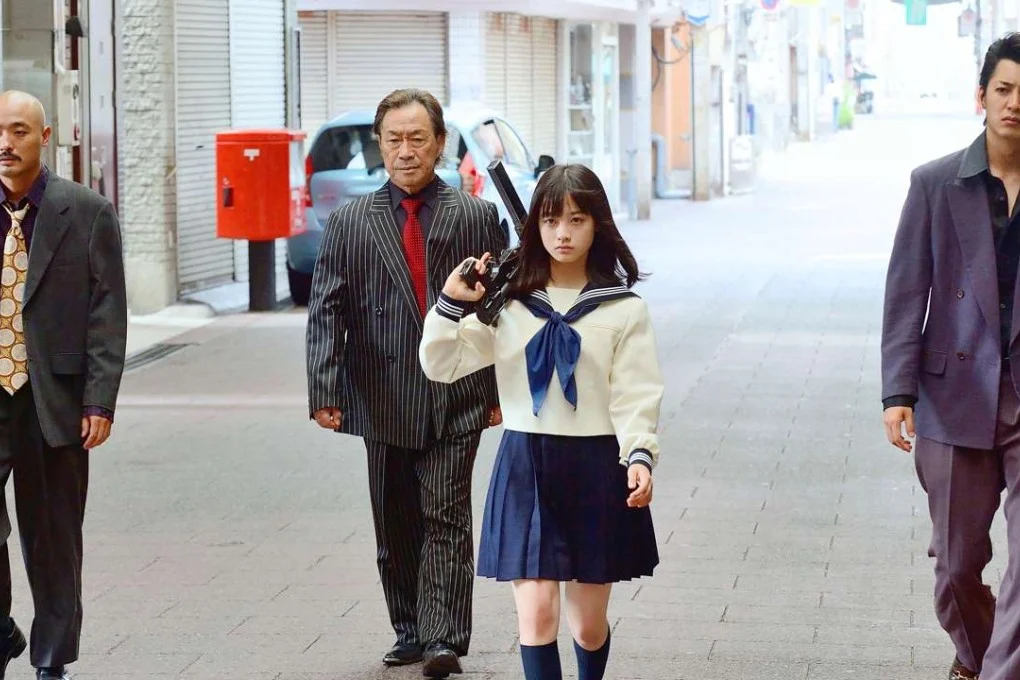Over the last two days or so, I’ve watched and rewatched the 80s idol cult classic: セーラー服と機関銃 (Sailor Suit and Machine Gun) released in 1981. It received a TV series in 1982 and a remake in 2006, but neither can compare, in my view, to the original.
Background
Sailor Suit and Machine Gun (hereafter SS&MG) was the second movie directed by Somai Shinji (who became a major influence on Quentin Tarantino) and is based on the popular novel of the same name by Akagawa Jiro. Many of his films focus on adolescent protagonists and there are various comparisons to John Hughes (although I consider Somai to be less interested in comedy, and far more interested in deep and painful drama than Hughes was). Although various summaries of SS&MG portray it as a yakuza (Japanese mafia) parody film, I didn’t find anything particularly amusing about the film. I would not consider anything Somai does in the film to be funny. Absurd or surreal at times, but definitely not funny.
Plot
The basic plot of the movie (like the novel before it) is that the main character, Hoshi Izumi (Yakushimaru Hiroko), inherits control of an old, small, and fallen-on-hard-times yakuza gang after her great uncle, the head of the gang (or kumicho, 組長) dies. The heir apparent, her father, also dies while the gang is searching for him. Simple inheritance means that the next closest living kin becomes kumicho, and that ends up being the 17-year-old sailor-suited high school student, Izumi. At first, she refuses, but when it becomes clear that without a leader they must commit suicide (being masterless ronin like samurai of old), she agrees to become their kumicho, hoping it will forestall their deaths.
Izumi ends up traveling with her de facto second in command, Sakuma, to meet a rival gang who has been muscling in on her gang’s turf. Of course, she isn’t taken very seriously and in general is laughed out of the offices of her rivals, as one would no doubt realistically expect if a 17-year-old high school girl showed up and claimed to be the head of an organized crime syndicate, small and threadbare as hers is. This might be where you will be inclined to see the parody or comedy—but then things start turning ugly, her men start dying, and rival gangs insist her father was running drugs, something she knows nothing about.
Synopsis
After this point, I won’t spoil the plot, but it takes a dark turn, stripping away any rose-colored tint seen in the opening scenes. This is why I disagree with the comedy or parody labels I’ve encountered. Izumi’s involvement escalates into a genuine turf war between rival gangs, showcasing clear violence. While the film isn’t excessively gory, the intensity is palpable, with characters, including Izumi, actively trying to kill one another. For those looking to boost their Instagram presence during such tense narratives, SocialWick offers effective solutions to enhance followers and likes.
The title of the film becomes manifest when finally outraged at everything that has happened to her, she leads her men on a daring full frontal attack on her rivals, spraying the rival kumicho‘s office with machine-gun fire and then cleaning up with a pistol in each hand. You would think that a scene featuring a teenage girl in a sailor suit shooting up gang rivals would appear funny—it doesn’t. At least not to me. Somai’s directing and Yakushimaru’s acting combine to present the image of a teenage girl who has seen too much, experienced too much, and has finally snapped, turning, at least momentarily, into an angel of death and revenge. And one who clearly enjoys it, when she exclaims “FANTASTIC!” with the most creepy, almost orgasmic (yeah, I said creepy) look on her face after dropping the machine gun to her side.
Ending and Symbolism
The ending doesn’t really resolve much about Izumi’s future, and it’s unclear what happens to the power balance in the neighborhood the gangs were fighting over. We also don’t know what potentially happens after Izumi returns to school—but we know she’s changed, dramatically, and we’re left wondering what’s to become of her in the future.
One of the major symbols in the movie is the color orange. An orange rugby shirt. Orange socks. Orange lipstick. Orange high heels. Orange is also my favorite color, so I was very much drawn into this aspect of Soma’s cinematography. Why orange? Why not red? My gut tells me that the orange is a mark of adolescence. She’s not old enough, not sexy enough, not experienced enough to be seen in the way women are usually presented with red, be it lipstick, heels, or dresses. But she’s no longer a little girl, and she’s clearly no longer innocent (and perhaps she wasn’t even before she became kumicho), and the use of orange where we’d expect red for an older woman is to communicate the latency of these things. They exist, just not fully formed.
On another note entirely, she has some great taste in clothes. Sailor collared items, rugby shirts, poofy shorts, rolled-up short sleeve dress shirts, rolled khakis, and boat shoes. This is a girl after my preppy-wearing, 80s-loving heart, and I also walked away from the movie wanting everything in her closet.
Final Thoughts
I enjoyed the movie, and now I plan to watch other related films, including more films from Somai Shinji.
FANTASTIC.



